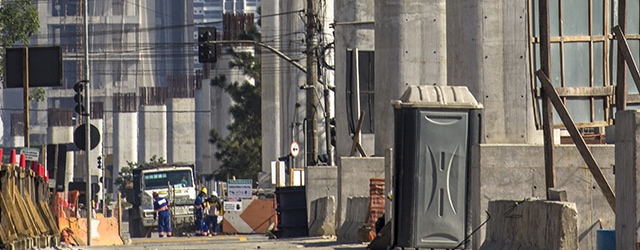Latin America | Emerging Markets Regional Review

After years of strong growth, many key markets in Latin America are faltering. Although overall the region is no longer producing the high growth it once did, a number of markets continue to rise to new heights.
Latin America was flying high after the 20082009 global crisis as one of the world’s leading emerging markets regions. But many analysts believe the boom may be over. The IMF in October cut its 2014 GDP growth forecast for the region to a meager 1.3%, down from a 2% forecast in July, while predicting a modest 2015 rise to 2.2%. However, analysts say investors will still seek opportunities there.
The IMF blamed declining commodity prices and policy uncertainty in many markets for the outlook deterioration. “Economic growth in Latin America and the Caribbean has slowed more than anticipated, as weak growth in South America has outweighed an incipient recovery in Mexico,” says the IMF, which contends external volatilities, especially faster-than-expected US interest rate hikes, could pose further challenges.
Brazil, the region’s largest market, has slowed significantly. GDP growth averaged 4.2% in 20032008, but fell to 2.1% in 20112013. Standard & Poor’s expects the economy to grow at a rate of less than 1% this year and less than 2% in 2015. The Central Bank of Brazil’s survey of private-sector analysts says growth will be 0.24% in 2014 and 1% in 2015.
Analysts in the same survey predict Brazilian inflation will end above 6% in both 2014 and 2015, at the top of the official target band, while the benchmark Selic interest rate will rise to 12% by end-2015, from 11.5%. Policymakers unexpectedly increased the Selic in October for the first time since April, in a bid to curb inflation.
Following her narrow reelection in October, Brazilian president Dilma Rousseff vowed to push through pending structural reforms to reignite growth during her second term, which begins January 1. Rousseff says she will “continue to fight inflation and make improvements in the field of fiscal responsibility.” Investors remain skeptical of the populist president’s promises, as witnessed by the sharp drop in the Bovespa stock index following news of her reelection—a drop that wiped out year-to-date gains.
“President Rousseff faces the challenges of restoring economic growth, removing obstacles to greater investment, controlling inflation and attending to growing demands for better public services,” says an S&P report. The rating agency notes the government will also have to simultaneously deal with social pressures.
S&P puts Brazil’s sovereign rating at one level above junk, while Moody’s cut its outlook to negative. “We could raise the ratings if the administration pursues more consistent policy initiatives to strengthen fiscal accounts or a more proactive reform agenda to improve the country’s medium-term growth outlook,” says S&P.
“What most investors miss is that Brazil’s vulnerability extends beyond its ties to commodity exports,” says Michelle Gibley, director of international research at the Charles Schwab Center for Financial Research. “Brazil’s inflation heats up even when growth is slow,” she adds, “because the workforce and infrastructure are already at capacity. Government spending geared toward improving education and infrastructure would provide long-term benefits and is preferred over the populist measures that contribute to the inflation problem and have more-short-term benefits.” Gibley argues persistent inflation hinders the central bank’s ability to provide stimulus amid an economic slowdown.
Fred Campos, director of transaction advisory services at BDO USA, says Brazil’s situation could be appealing. “Lower valuation multiples that currently exist as a result of the stronger US dollar and a deceleration of Brazil’s economy make the market attractive for some companies with a long-term view of the market.”
For Brazilian players, the reality may be different. “During the high-growth years of 20082011, Brazilian companies took on significant amounts of US dollar-denominated debt to finance expansion projects,” notes Josh Pristaw, senior managing director at GTIS Partners, the largest foreign real estate investor in Brazil. “A significant amount of foreign debt is now coming due, and limited capital is available for refinancing, causing serious balance sheet issues for many Brazilian companies.” Pristaw believes liquidity issues will lead to elevated distress levels that will bring motivated sellers to market.
“The combination of slower growth and debt/liquidity constraints are creating a distressed investment opportunity for well-capitalized investors,” says Pristaw. “What separates Brazil from other distressed economies, particularly in Southern Europe, is that Brazil’s downturn is cyclical, and the long-term drivers—such as positive demographics, a resource-rich economy and the rise of the middle class—are still in place.”
STAR PERFORMER
Mexico could become the region’s star performer. Widespread reforms approved this year will begin affecting the economy in 2015, including opening the oil sector to private investment, in partnership with the state-owned Pemex oil company, for the first time in 70 years. Pemex has already signed memoranda of understanding with global players like ExxonMobil, BHP Billiton and Eni. Investors are awaiting details of energy reform provisions, including structural costs, taxation rules and contract terms.
“Regarding Mexico, after a very disappointing first half of 2014, Euler Hermes expects it to outperform other big Latin American countries, such as Argentina and Brazil, in 2015,” says Ludovic Subran, chief economist and director for economic research at Euler Hermes, a global export- and trade-credit insurance provider. “The economy will benefit from stronger exports in 2015, owing to a recent depreciation of the Mexican peso and, especially, stronger economic growth in the United States.”
Other markets present a mixed bag. “Chile is suffering from lower demand for commodities, especially in its mining sector,” notes Campos. “However, Chile’s stability and market-friendly policies—compared to its Latin American neighbors—have always made it an attractive country for investors. We often see Chile being used as an entry point into Latin America for more conservative companies and private equity firms.”

Fitch lowered Chile’s 2014 GDP growth forecast to 1.8% from a previous 4.1%, and expects 2.6% growth in 2015. The slowdown, initiated by commodity weakness, is intensified by a controversial tax reform implemented this year that will boost corporate tax rates progressively to 25% by 2017. “Chile remains the most competitive economy in Latin America, with a strong institutional setup, low levels of corruption and an efficient government,” says Daniel Aranda, a partner in the Mexico City office of international law firm Gardere Wynne Sewell.
Colombia and Peru will fare well, and Colombia is on the rise. “The clear up-and-comer in South America is Colombia,” says William Andrews, chair of the Department of International Business at Stetson University’s School of Business Administration. “The drug and terrorist infestation that typified Colombia a decade ago has been brought under control. Foreign direct investment is at the highest level ever, and Colombia ranks only behind Brazil and Chile in South America in the amount of FDI received.”
In Peru the state-owned Petroperu oil company will sell a 49% stake in the company during the second quarter of 2015. The government expects oil production to increase by more than 5% during the year, ending more than a decade of declining output.
Argentina and Venezuela will remain outliers, as their economies plunge. Venezuelan GDP is expected to contract by 3.5% in 2014, according to Standard & Poor’s, despite having the world’s largest oil reserves, as a result of the Nicolás Maduro administration’s failed economic policies. And Fitch analysts contend that Argentina’s 2014 debt default will continue to stunt growth, fuel inflation, pressure exchange rates and deplete hard-currency reserves. Argentina’s GDP is expected to contract by 1.9% in 2014 and 2.6% in 2015, further affected by falling commodity prices.
Overall, the region will remain attractive for investors in 2015. As part of its Deal Flow Predictor, which tracks global M&A trends, Intralinks is seeing positive dealmaker sentiment in the region. “The appetite for deals doesn’t seem to be in peril in Latin America,” says Matthew Porzio, vice president of M&A strategy at Intralinks, which operates virtual deal rooms for M&A transactions. “More than 49% of participants in the region said that they expect to do more deals than they did six months ago, and 44% of respondents were optimistic about the current environment.” Another 69% of dealmakers that responded to the Intralinks survey expect deal volume to rise in coming months.
According to Gibley at the Charles Schwab Center, “The theme for Latin America is, ‘Slower is the new normal.’”



